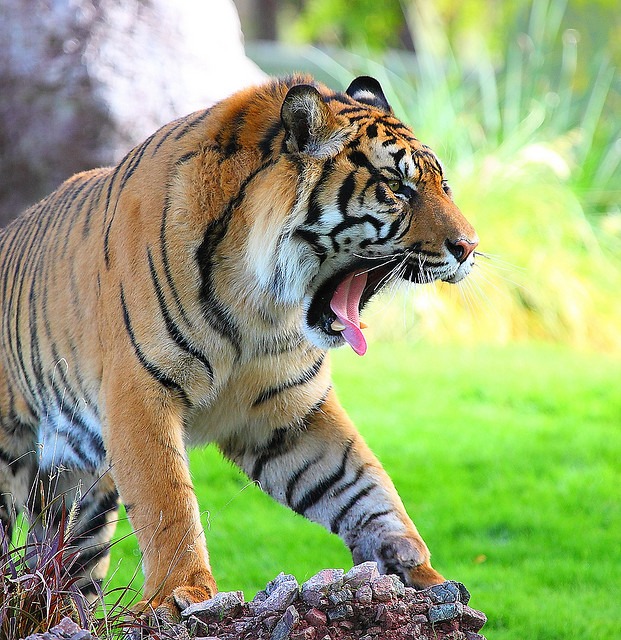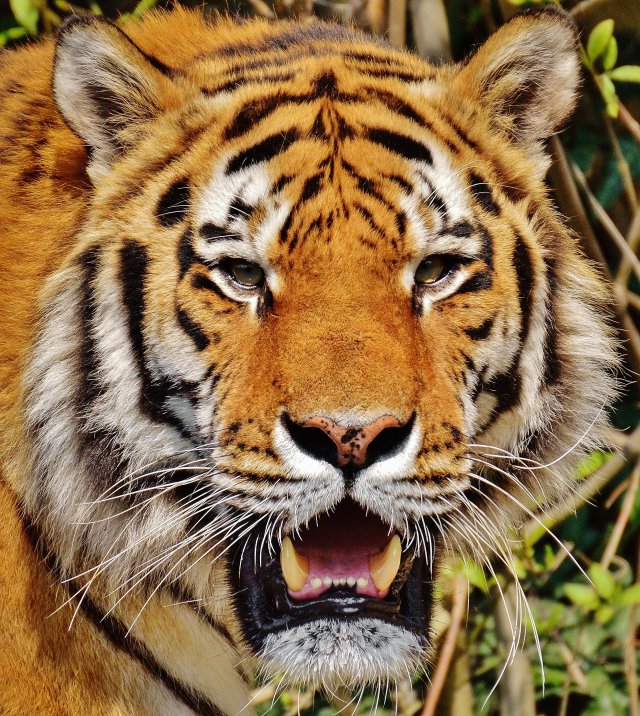Roaring with Strength: The Mighty Tiger and Its Dominance in the Wild
Roaring with Strength:
The tiger, with its majestic appearance and powerful presence, has long been a symbol of strength and dominance in the wild. As the largest member of the cat family, tigers possess a unique set of characteristics that enable them to thrive in their natural habitat. In this article, we will explore the fascinating world of tigers, their physical attributes, hunting techniques, and their crucial role in maintaining the delicate balance of ecosystems.
The Physical Prowess of Tigers
Tigers are known for their impressive physical attributes, which contribute to their dominance in the wild. Here are some key features that set them apart:
- Size: Tigers are the largest cats in the world, with males weighing up to 660 pounds and measuring up to 10 feet in length. Their size alone gives them an advantage over other predators.
- Strength: Tigers possess immense strength, enabling them to take down prey that is much larger than themselves. Their muscular bodies and powerful jaws allow them to overpower animals such as deer, wild boars, and even young elephants.
- Speed and Agility: Despite their size, tigers are incredibly agile and can reach speeds of up to 40 miles per hour. This combination of speed and agility makes them formidable hunters.
- Camouflage: Tigers have a unique coat pattern that helps them blend into their surroundings. Their orange fur with black stripes provides excellent camouflage in the dense vegetation of their habitats, allowing them to stalk their prey undetected.
Roaring with Strength: The Art of Hunting
Tigers are apex predators, meaning they are at the top of the food chain in their ecosystems. Their hunting techniques are a testament to their dominance and adaptability. Here are some fascinating insights into their hunting strategies:
- Stalking: Tigers are masters of stealth. They patiently stalk their prey, using their camouflage to get as close as possible before launching a surprise attack. Their ability to remain hidden until the last moment increases their chances of a successful kill.
- Ambush: Tigers often use ambush tactics to catch their prey off guard. They wait patiently in dense vegetation or near water sources, where animals come to drink. When the opportunity arises, they pounce with lightning speed, overpowering their unsuspecting victim.
- Strategic Targeting: Tigers are selective hunters and target weak or injured animals. By focusing on vulnerable prey, they increase their chances of a successful kill while minimizing the risk of injury.
- Powerful Bite: Tigers have one of the strongest bites among all land mammals. Their sharp teeth and powerful jaws allow them to deliver a fatal bite to the neck or throat of their prey, ensuring a quick and efficient kill.
Roaring with Strength: The Role of Tigers in Ecosystems
Tigers play a vital role in maintaining the delicate balance of ecosystems they inhabit. As apex predators, they have a significant impact on the populations of their prey species, which in turn affects the entire food chain. Here are some key reasons why tigers are crucial to their ecosystems:
- Controlling Herbivore Populations: By preying on herbivores such as deer and wild boars, tigers help regulate their populations. This prevents overgrazing and ensures the survival of plant species, which are essential for maintaining healthy ecosystems.
- Preserving Biodiversity: Tigers are known as umbrella species, meaning their conservation indirectly benefits a wide range of other species. Protecting tiger habitats ensures the preservation of diverse ecosystems and the countless species that rely on them.
- Indicating Ecosystem Health: The presence of tigers in an ecosystem is a sign of its overall health. Their
 decline or disappearance can indicate underlying issues such as habitat loss, poaching, or a decline in prey populations.
decline or disappearance can indicate underlying issues such as habitat loss, poaching, or a decline in prey populations.
Conclusion
Roaring with Strength: The mighty tiger, with its physical prowess, hunting techniques, and crucial role in ecosystems, stands as a symbol of strength and dominance in the wild. Understanding and appreciating the unique characteristics of tigers is essential for their conservation and the preservation of the delicate balance of our natural world. By protecting these magnificent creatures, we not only ensure their survival but also safeguard the health and diversity of entire ecosystems.
Escape to Nature’s Haven: Turpentine Creek Wildlife Refuge in Eureka Springs, AR




